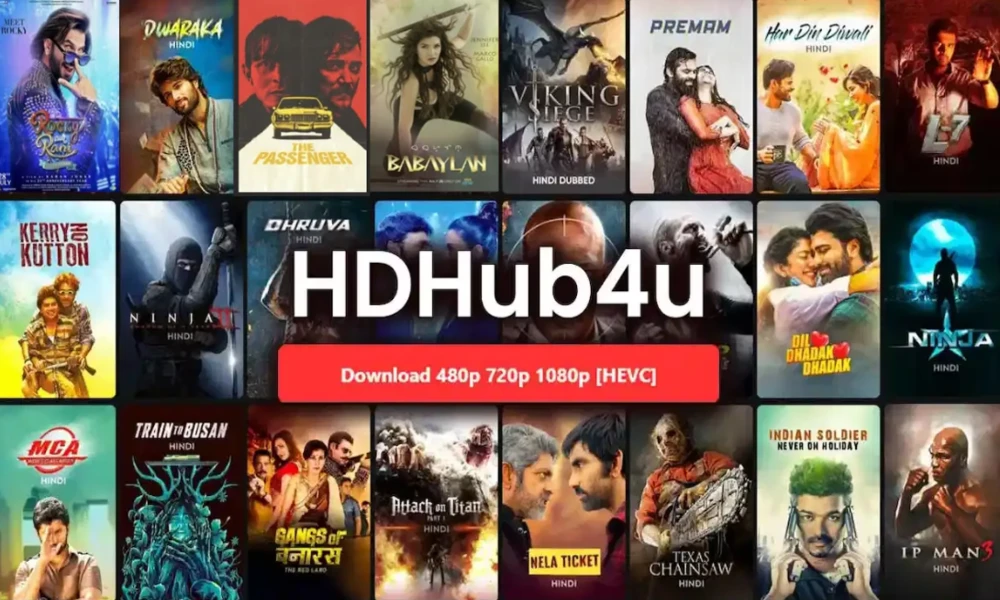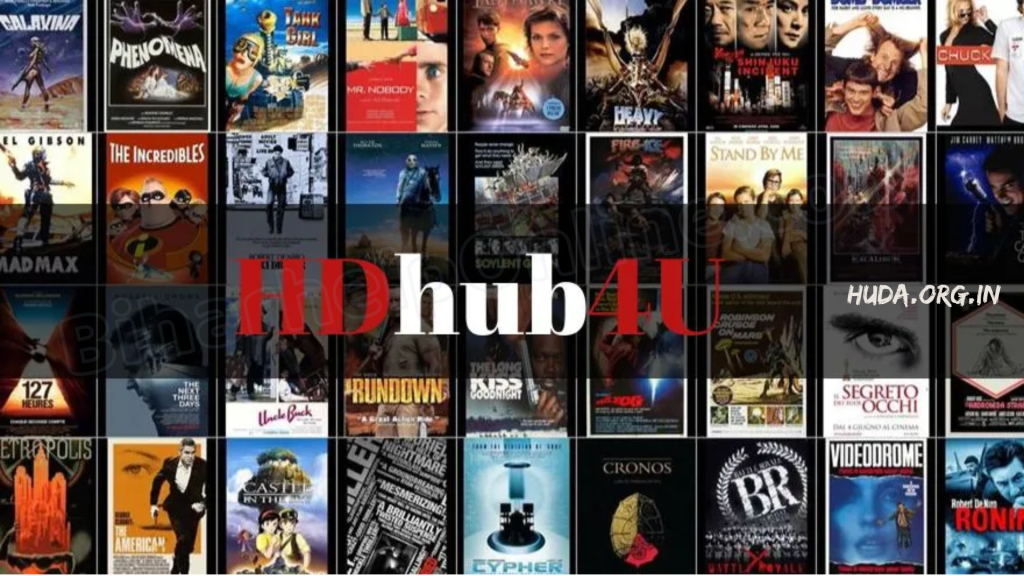Top HD Movies To Watch On HDHub4u.hd Now!
Is the relentless pursuit of high-definition entertainment truly changing the way we consume media? The rise of platforms offering "hd" content, like hdhub4u, signals a seismic shift in audience expectations and the evolution of distribution models, demanding immediate access to pristine quality.
The digital landscape has become a vast, sprawling arena where content creators and distributors battle for audience attention. In this arena, the demand for superior visual and auditory experiences has become a defining characteristic. The simple acronym, hd, has transitioned from a technical specification to a coveted promise of quality, a shorthand for the immersive, detailed experiences that modern viewers now expect. This expectation fuels a complex ecosystem of platforms, services, and technologies, all vying to deliver on the promise of high-definition entertainment. But what exactly constitutes hd content in this evolving world? And what are the implications for the future of media consumption? The answer lies within the nuances of resolution, compression, and the ever-shifting battle between legal avenues and the allure of accessible, albeit sometimes ethically questionable, content sources.
| Attribute | Details |
|---|---|
| Title | The Evolution of High-Definition Content Consumption |
| Focus | Analyzing the impact of HD content, particularly through platforms like hdhub4u, on media consumption habits, content distribution, and technological advancements. |
| Key Trends |
|
| Challenges |
|
| Technological Aspects |
|
| Legal & Ethical Considerations |
|
| Reference Website | The U.S. Copyright Office |
The term "hd" itself, in this context, is primarily an adjective, describing the quality of the video and audio. However, its usage has evolved to become, in essence, a noun referring to a type of content or a desired standard of viewing. It's the defining characteristic that separates the modern viewing experience from its predecessors. Before high-definition, the visual world was a blur of fuzzy lines and limited detail. Now, viewers expect crisp images, vibrant colors, and immersive soundscapes. This shift has driven an insatiable appetite for higher resolutions, better compression techniques, and the technologies to deliver those experiences seamlessly.
The transition to "hd" has been a story of continuous technological advancement. From the early days of 720p to the current prevalence of 1080p and the burgeoning rise of 4K and even 8K content, each step has presented new challenges and opportunities. Codecs like H.264 and, more recently, H.265 (HEVC) play a crucial role in compressing large video files into manageable sizes without significantly compromising quality. This allows streaming services and other platforms to deliver high-definition content over the internet, even with limited bandwidth.
The success of streaming services is inextricably linked to this pursuit of "hd". Platforms like Netflix, Amazon Prime Video, and Disney+ have invested heavily in producing and acquiring high-definition content. Theyve recognized that superior quality is a key differentiator in a fiercely competitive market. Their subscribers are willing to pay a premium for the enhanced viewing experience, and this demand, in turn, incentivizes further investment in high-definition production and distribution technologies.
However, the path to widespread "hd" adoption hasn't been without its hurdles. The proliferation of platforms like hdhub4u, which offer access to content often without adhering to copyright laws, highlights the ongoing battle between legitimate content providers and those seeking unauthorized access. This represents a significant threat to the entertainment industry, as piracy erodes revenue streams and discourages investment in new content. The legal and ethical ramifications of accessing content from such platforms are complex, adding a layer of moral ambiguity to the "hd" experience.
The definition of "hd" itself is also constantly evolving. While 1080p was once the standard, 4K (or Ultra HD) is quickly becoming the new norm. With a resolution of 3840 x 2160 pixels, 4K offers four times the resolution of 1080p, resulting in even greater detail and visual clarity. 8K, with a resolution of 7680 x 4320 pixels, is already on the horizon, promising an even more immersive experience. These advancements require not only more powerful televisions and display devices but also more robust internet connections and advanced compression technologies to deliver the content smoothly.
The impact of "hd" extends beyond just the visual experience. High-definition audio, often accompanying the high-resolution video, plays a critical role in creating a truly immersive experience. Surround sound formats, like Dolby Atmos and DTS:X, have become increasingly popular, allowing viewers to feel as if they are truly within the scene. This has driven demand for home theater systems capable of reproducing these complex audio formats, further fueling the growth of the "hd" ecosystem.
Moreover, the rise of "hd" has had a significant impact on content creation. Filmmakers, television producers, and game developers are increasingly focused on creating content that takes full advantage of high-definition technologies. This means using higher-quality cameras, more sophisticated editing techniques, and advanced visual effects. The goal is to produce content that is not only visually stunning but also optimized for the viewing experiences viewers now expect.
The internet and the availability of faster broadband speeds have been crucial enablers in the proliferation of "hd" content. The ability to stream high-quality video on demand has transformed the way people watch television and movies. Traditional television broadcasting, with its limited channels and scheduled programming, is losing ground to the flexibility and convenience of streaming. This shift is further accelerated by the availability of "hd" content on a wide range of devices, including smartphones, tablets, and smart TVs.
The future of "hd" promises even more dramatic changes. Artificial intelligence (AI) and machine learning are playing an increasingly important role in content creation, compression, and distribution. AI can be used to upscale lower-resolution content to "hd" quality, enhancing the viewing experience for older programs. It can also be used to optimize video compression, ensuring that content is delivered with the best possible quality given the available bandwidth. Furthermore, AI is helping to personalize the viewing experience, recommending content based on individual preferences and viewing habits.
Despite the advancements and conveniences, the ethical considerations surrounding "hd" content remain. The ease with which content can be copied and shared online has led to widespread piracy, threatening the livelihoods of content creators and the long-term viability of the entertainment industry. Platforms that facilitate illegal distribution, such as hdhub4u, are constantly battling legal challenges and efforts to shut them down. Yet, the demand for readily available, high-quality content often overshadows these concerns for many users.
The evolution of "hd" is a testament to the human desire for a richer, more immersive entertainment experience. It's a story of technological innovation, changing consumer habits, and the ongoing struggle to balance creativity, accessibility, and legal rights. As technology continues to advance, we can expect even more stunning visuals, immersive audio, and new ways to consume media. The question is, how will we navigate the ethical and legal complexities that come along with it?
The narrative surrounding "hd" is not simply about sharper pictures and better sound; it reflects a broader cultural shift. Viewers are no longer satisfied with mediocre quality. They want to be transported, engaged, and fully immersed in the story. This desire is pushing the boundaries of what is possible, from the development of 8K displays to the creation of ever more sophisticated surround sound systems. The evolution of "hd" is a constantly evolving story, a dynamic interplay of technology, ethics, and the enduring power of storytelling.
The accessibility of "hd" content, however, creates a double-edged sword. The allure of platforms like hdhub4u, which promise instant access to a vast library of "hd" movies and television shows, poses a substantial challenge to the legal distribution models. Piracy, fueled by the convenience and perceived affordability of illegal downloads and streams, undermines the financial viability of content creation. This in turn impacts the quality and availability of future content.
The battle against piracy is multifaceted, involving legal action, technological countermeasures, and public awareness campaigns. Content owners employ digital rights management (DRM) technologies to protect their intellectual property. These systems restrict unauthorized access to copyrighted material. Furthermore, the authorities are increasingly cracking down on illegal streaming sites and torrent networks, attempting to disrupt the flow of pirated content. However, as one door closes, another often opens, perpetuating a constant cat-and-mouse game.
The ongoing debate about the value of content is inextricably linked to the accessibility of "hd". As consumers become accustomed to obtaining content for free or at a low cost, the perceived value of legitimate subscriptions and purchases decreases. This devaluation poses a significant threat to the sustainability of the entertainment industry, especially for smaller independent filmmakers and content creators. This is a critical point. If the demand for hd entertainment continues to grow at the expense of legal channels, the very future of content creation could be jeopardized.
Looking ahead, the "hd" revolution will continue to shape the future of media consumption. The emergence of new technologies, such as virtual reality (VR) and augmented reality (AR), promises to further blur the lines between the real and the virtual. These technologies are already being used to create immersive "hd" experiences, offering viewers a new level of engagement with content. The evolution from simple viewing to interactive participation is rapidly becoming a reality.
The pursuit of high-definition is an ongoing journey. It is driven by consumer demand, technological innovation, and the persistent human desire for ever-more engaging experiences. While the ethical considerations surrounding access and distribution remain complex, the future of "hd" is bright. However, navigating the challenges of piracy, evolving legal frameworks, and the constant demand for the "next big thing" will be crucial to ensuring that the entertainment industry thrives in this evolving landscape. The future is sharp, it's clear, and it's undeniably "hd."



